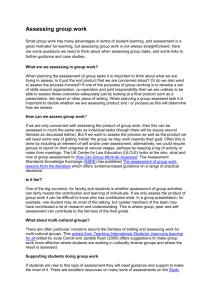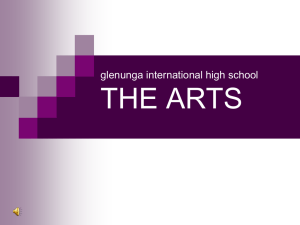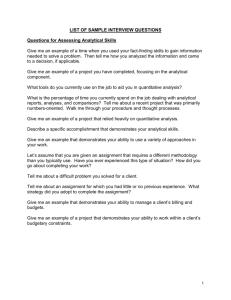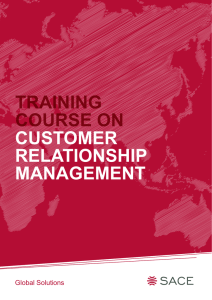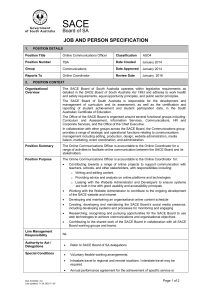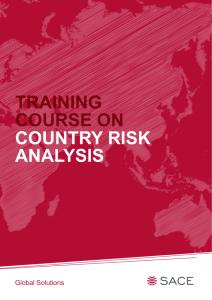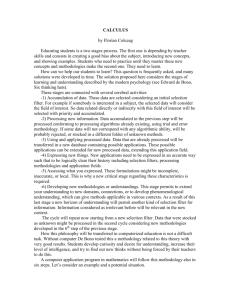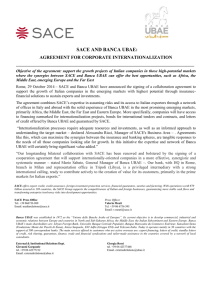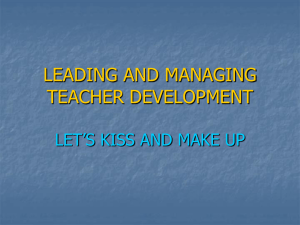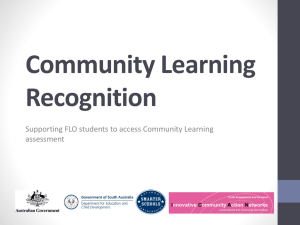Assessing the Capabilities of our Millennium learners
advertisement
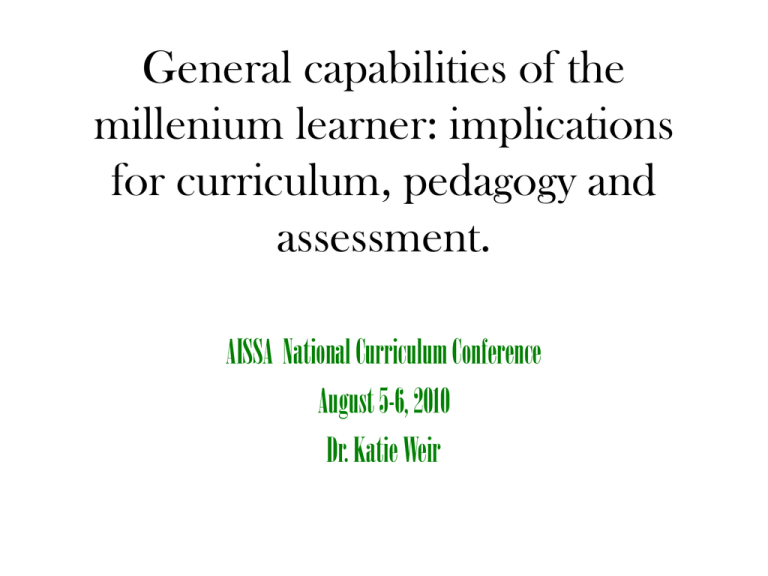
General capabilities of the millenium learner: implications for curriculum, pedagogy and assessment. AISSA National Curriculum Conference August 5-6, 2010 Dr. Katie Weir Session Overview • Unpacking the “General Capabilities” from the National Curriculum • Contrasting these to the new SACE Capabilities • Assessing capabilities in South Australia • Assessing capabilities: for whom and for what purpose? • Some approaches to assessing capabilities • Workshop: evaluating different approaches to assessing capabilities The Melbourne Declaration… …identifies the General Capabilities as one of three broad categories of learning outcomes that the National curriculum should deliver to students. According to ACARA National Curriculum Board (2009).The Shape of the Australian Curriculum. Author: Canberra. The General Capabilities Literacy Numeracy ICT Creativity Thinking Skills Self-Management Social Competence Teamwork Ethical Behaviour Intercultural Understanding Unpacking these capabilities General Capability • Literacy, numeracy, ICT skills and understanding • Thinking Skills • Creativity Explanation/Comment • Communication in a variety of modes and using a range of tools and symbols (semiotic competency) • “…constitute the core of most intellectual activity”; includes critical thinking, problem solving, justifying, complex reasoning (aka upper levels of Bloom’s taxonomy) • “…is closely linked to innovation & enterprise…& requires intellectual flexibility, open-mindedness, adaptability and readiness to try new things” • Intercultural Understanding • Respect and tolerance of other cultures and backgrounds Unpacking these capabilities General Capability Explanation/Comment • Self-management • Managing and evaluating learning; working independently and being responsible for personal behaviour and performance • Teamwork • • Social Competence • Working in harmony, contributing, accepting roles and responsibilities, acceptance of difference, building social relationships Operating successfully in a range of social situations, foster inclusivity, resolve conflict, initiate & manage relationships. • Ethical Behaviuor • This includes the willingness and determination to think, judge and act according to a guiding set of moral and ethical principles Contrasting the National Approach to SA’s new SACE National Curriculum Literacy, numeracy, ICTs Thinking Skills Creativity Self-management Social Competence Teamwork Ethical Behaviour Intercultural Understanding New SACE Communication Learning Work Personal Development Citizenship Assessing and Reporting the new SACE Capabilities Ramsay, E. (2007). Capabilities Implementation Project: Report to the future SACE Steering Committee. Adelaide:DECS IMPLICATIONS FOR TEACHERS???? For whom and for what purpose are we assessing capabilities? The rationale for making these capabilities more explicit in the curriculum is primarily linked to the changing nature of work. It also mentions the education of the whole child as part of the national charter. So, are these being assessed and reported for employment opportunities, credentials for higher education or other selection and certification purposes? Which begs the question: How will these results be used by students, systems, employers, tertiary providers? Some Approaches to Assessing Capabilities 1. Via a portfolio and student self-assessment 2. Through specified transdisciplinary assessment tasks/projects 3. By auditing what already exists and making capabilities more explicit in the curriculum 4. Through student-directed extracurricular activities and community service 5. Other? Workshop Activity The aim of this activity is to evaluate each approach to assessing the general capabilities. Working in groups of 4-5, each group will apply a critical thinking skill – the PMIQ – to look at the implications of each assessment strategy from different perspectives and to come up with pertinent questions about each approach. Groups will report back to the whole forum and discuss which appears the best approach to take in different contexts and for different purposes.

